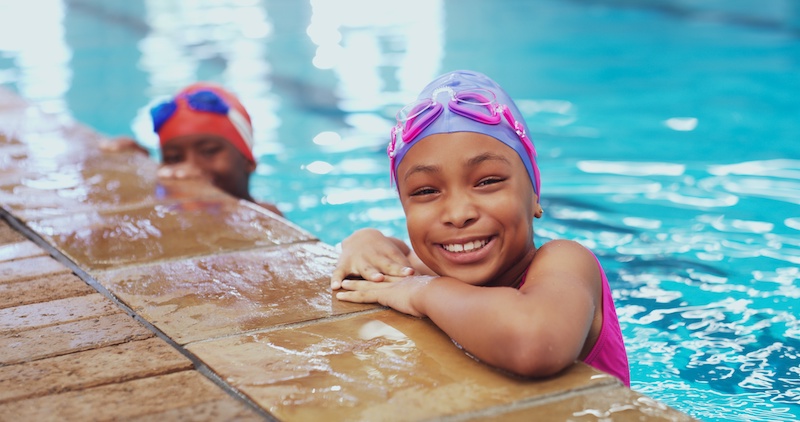
Photo courtesy of Getty Images
Summer in Houston means hot, humid weather. Many families are heading to their local swimming pools, lakes, beaches and waterparks to find relief from the sweltering heat. As more and more children engage in water activities this summer, it’s not unusual to see an uptick in cases of acute otitis externa.
Commonly referred to as swimmer’s ear, otitis externa is an outer ear infection that is common in children who spend a lot of time in the water. When excess moisture is trapped in the ear, it can irritate and break down the skin in the narrow ear canal, creating a perfect environment for bacteria to grow and multiply. When an infection occurs in the outer ear, your child may experience symptoms including ear pain, swelling, redness and itchiness inside the ear. Fluid drainage and hearing loss also can occur.
While some children can swim all summer long and not get swimmer’s ear, others can develop an outer ear infection after a bath or shower if too much moisture remains in the ear. If your child has a naturally curvy and narrow ear canal, it’s more likely water can get trapped after any type of water exposure.
While most excess water in the ear canal comes from swimming – hence the name, swimmer’s ear – you don’t have to swim to get otitis externa. One piece of advice I give my patients is to refrain from cotton swabs or bobby pins for cleaning ears. Any foreign object, like pen caps, paper clips or fingers, can cause trauma or scratches to the thin layer of skin covering the outer ear canal, increasing the risk of infection.
As an otolaryngologist (ENT) at Texas Children’s, I’ve treated many children and adolescents with swimmer’s ear. Depending on the severity of infection, there are several ways to treat this condition. If the ear canal is obstructed, a suction device is used to gently remove any excessive ear wax, debris or fluid discharge. Oftentimes, antibiotic ear drops are given several times a day for 7 to 10 days to clear up the infection. If the ear canal is swollen, a wick is placed inside the canal to deliver the medicine to the infected areas of the ear passed the swelling. Occasionally, if the infection is severe enough, oral or IV antibiotics may be necessary. If your child has any ear pain with or without fever, hearing loss in one or both ears, or has abnormal discharge from the ear, call your ENT physician so your child can receive immediate care.
During the summertime, many concerned parents ask me, “What can I do to prevent swimmer’s ear?” I’ve compiled several tips parents can follow to protect their child’s ears and keep ear infections at bay.
- Keep your child’s ears as dry as possible while in the water. Before your child jumps into the pool, put on a bathing cap, ear plugs or custom-fitted ear molds to block excess water from entering the ear. This can help decrease the risk of infection, especially if your child is prone to swimmer’s ear.
- Dry your child’s ears thoroughly after swimming or showering. Wipe the outside of your child’s ear (not inside the ear canal) slowly and gently with a towel. Pulling the earlobe in different directions while the ear is pointed downwards can allow water to drain out more easily. If there is still water in the ears, use a hair dryer on the lowest setting and hold it at least a foot away from the ear and dry the ears for a few seconds.
- Keep foreign objects out of ears. Never use a cotton swab, paper clip or hairpin to clean your child’s ears, and avoid scratching the inside of his or her ear with your finger. This can cause tiny tears in the skin covering your child’s ear canal, which can create an entry point for bacteria to thrive.
- Don’t remove ear wax. Ears contain a substance called cerumen, or earwax. This substance protects the ear canals by forming an acidic coating that prevents growth of bacteria and fungi. If you think your child’s ear canal is blocked by wax, consult your physician who can treat this problem.
Keeping these simple tips top of mind can help you and your child enjoy the water this summer. Remember, keep your ear canals dry, wear sunscreen and have a healthy and safe summer! To learn more about our ENT services, visit our website.